The 140mm Slim Tower CPU Cooler Roundup: Thin & Light Done Just Right
by E. Fylladitakis on May 24, 2017 8:00 AM EST- Posted in
- Cases/Cooling/PSUs
- be quiet!
- Noctua
- Phanteks
- Cooler
- Thermalright
Noctua NH-U14S
Starting things off, we have the Noctua NH-U14S. Noctua supplies the NH-U14S inside a large, sturdy cardboard box. The artwork on the box is austere, limited to providing useful information about the cooler itself.
Inside the box everything is individually packed into separate cardboard boxes. Alongside with the mounting hardware, Noctua is also offering a basic screwdriver for the installation of the cooler, a fan speed reducer, a metallic case badge and a syringe with NT-H1 thermal compound.
Noctua offers a very large selection of CPU coolers, with at least one product per cooler type. The NH-U14S is their version of a single tower cooler that makes use of a 140 mm fan and, according to Noctua, it has been designed so as to offer the best possible overall performance while staying clear of the LGA2011/LGA2066 RAM slots. It also is slightly taller than the other coolers of this review, even if only by 4-5 mm (0.15”-0.2”).
The company characterizes the NH-U14S as a “slim” cooler, but the dense fin array is 52 mm deep and 150 mm wide, providing more than ample heat dissipation surface. In theory, the cooler should be able to handle thermal loads well above 200 Watts. The top fin of the array is not thicker but has the company’s logo and name engraved on it.
The NH-U14S makes use of six thick heatpipes to transfer the heat from the base of the cooler to its fin array. Each heatpipe expands to either side of the fin array and the designers had each heatpipe expanding at a different distance from the center of the fin array, resulting to twelve evenly distributed thermal energy transfer lanes from the base of the cooler to fin array. The heatpipes are made of copper but are nickel plated. The joints are all soldered, ensuring maximum thermal transfer and mechanical cohesion.
Only the bottom part of the cooler’s base that makes contact with the processor is made out of copper. The top half of the base is made out of aluminum and the mounting bracket is nickel-plated steel. As only the bottom part actually contributes on the transfer of the thermal energy from the CPU to the heatpipes, this is a very reasonable design for the reduction of a cooler’s weight and overall cost. A full copper base would substantially increase the weight of the design without offering any advantage.
The copper base of the NH-U14S has also been nickel plated and is very smooth, yet not machined down to a perfect mirror finish. It appears to be easy to clean and difficult to soil. Noctua generally does not polish the bases of their coolers as it makes no apparent difference on performance, so they opt to not raise the cost of their products even higher for something that would not make an actual difference.


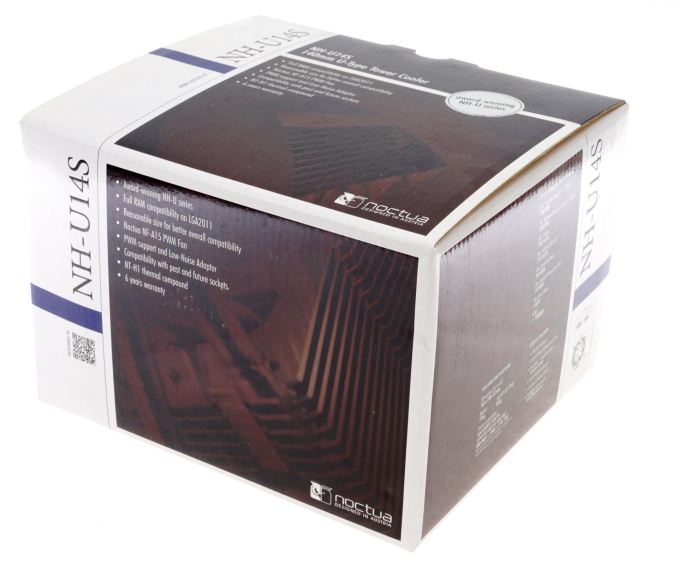
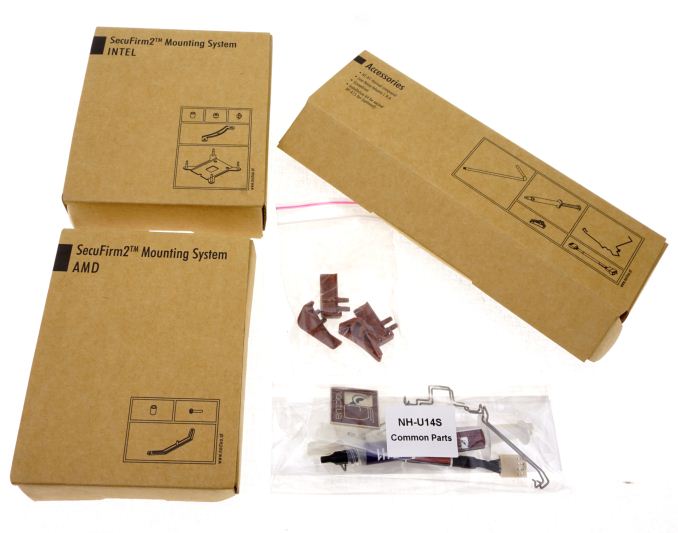
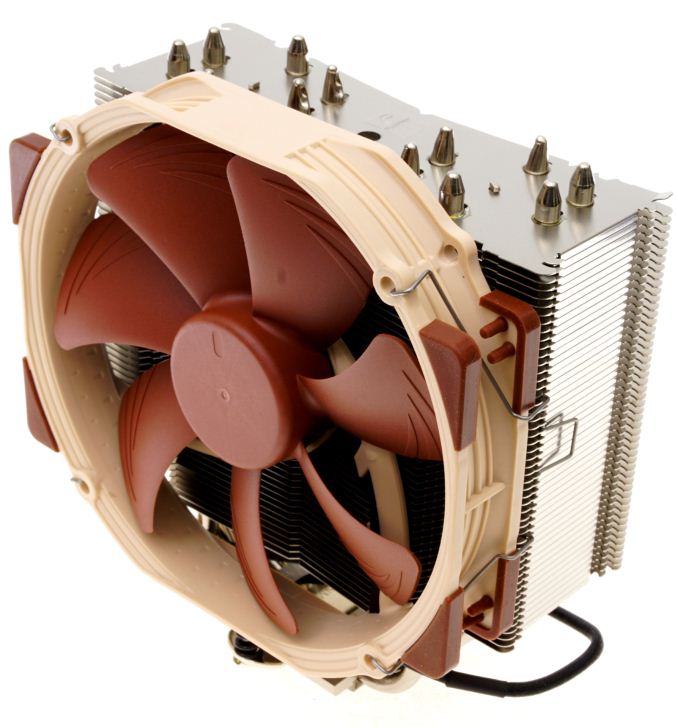
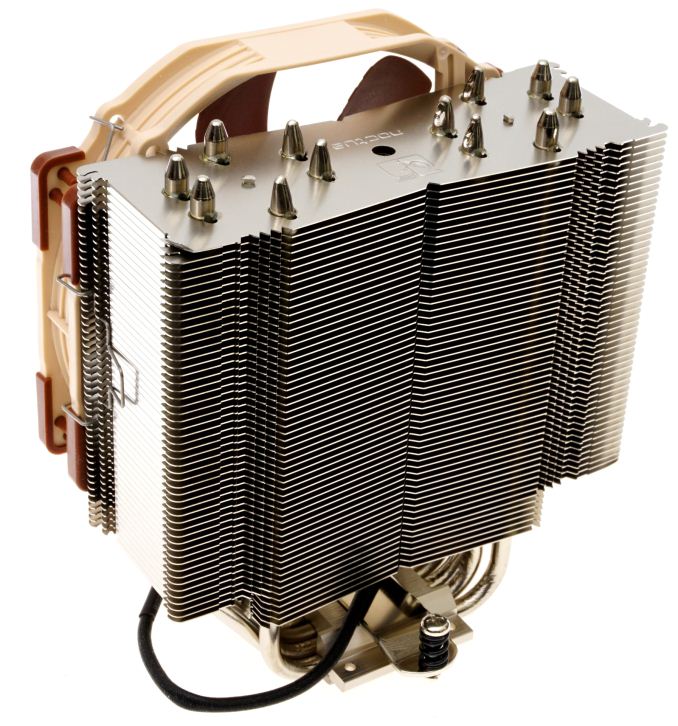
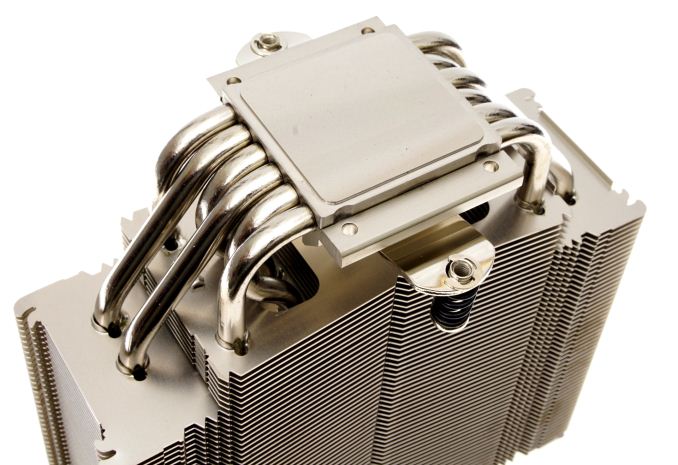









74 Comments
View All Comments
Ian Cutress - Wednesday, May 24, 2017 - link
Are you measuring the heatsink, or the product? A lot of these companies go to great lengths to 'optimize' their fan design.fanofanand - Thursday, May 25, 2017 - link
I see this same type of comment applied to GPUs and cases too. Products should be tested exactly as they are sold. If a company wants to get their price under $x and they skimp on the case fans to do it, the reader should know that so they can price it appropriately by adding in the cost of good fans. Conversely if a company's price is higher but out of the box has the performance you would achieve from changing out the fans then that should be acknowledged and the reader be made aware. The way Anandtech does it is absolutely appropriate and allows the reader to get an accurate picture of what they are getting for the money.snarfbot - Thursday, May 25, 2017 - link
right, and like i said that is good, but when it comes to evaluating what product is best at specific noise levels the picture becomes less clear.isolating the performance of each cooler by using the same fan on each would help in that regard, and would be a cogent data point regardless imo.
in your testing methodology page you didnt mention whether you were using the boxed tim, or something like arctic silver for all products, as it is commonly accepted as the standard by which other tims are measured against in tech circles. i prefer mx-4, because its easier to use, but its good to have a standard to measure against.
you might do that to eliminate one variable from your test, and the same argument could be made for using one common fan across the board for that reason.
Infy2 - Wednesday, May 24, 2017 - link
Some comment on the difficulty of installation would be helpful. The inlcuded Noctua cooler has repuation of being easy to install while the Thermalright is not.gradoman - Saturday, May 27, 2017 - link
Late reply, but Thermalright's installation method is pretty simple these days. I'd say a half-step below Noctua's mounting system, but you're not going to be struggling to pin down sprung screws.https://youtu.be/EDRNBCH1lRA?t=1760
sheh - Wednesday, May 24, 2017 - link
Would be interesting to know their weights.Sivar - Wednesday, May 24, 2017 - link
Thank you for the useful, thorough review!Daisho11 - Wednesday, May 24, 2017 - link
It would be interesting to see how these heatsinks perform when they all use the same fan. Maybe test them all with the Noctua fan or some other popular variant (Corsair, GentleTyphoon, SanAce, etc.)Lolimaster - Thursday, May 25, 2017 - link
The efficieny and temps of Ryzen are so nice that you don't need AIO or big tower coolers, most of the time the stock cooler is more than enough, and it's silent :DI think the best cooler for Ryzen is the Coolermaster Hyper 212X, everything else is basically overkill.
Lolimaster - Thursday, May 25, 2017 - link
This will probably be nice for Ryzen 9 monsters.